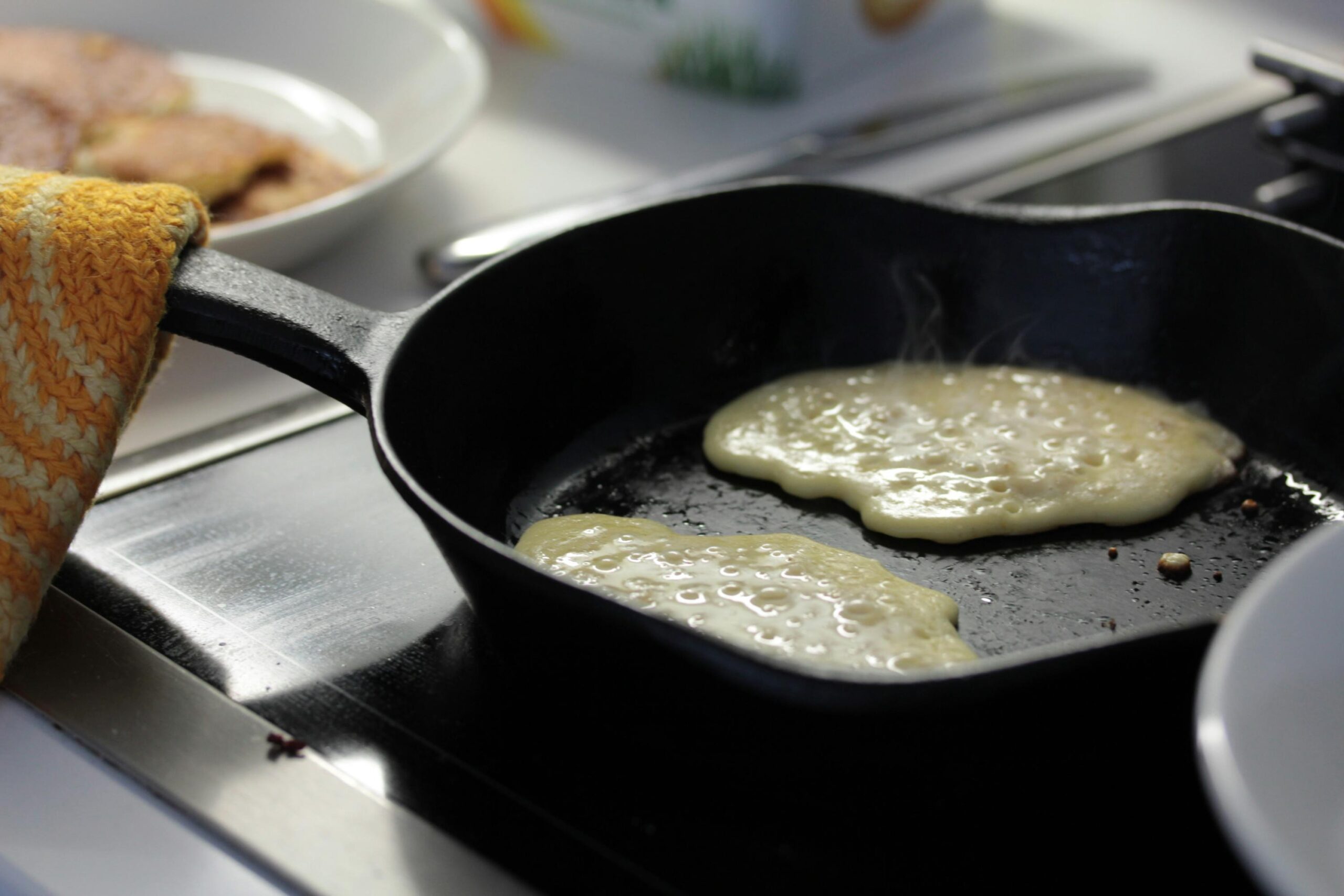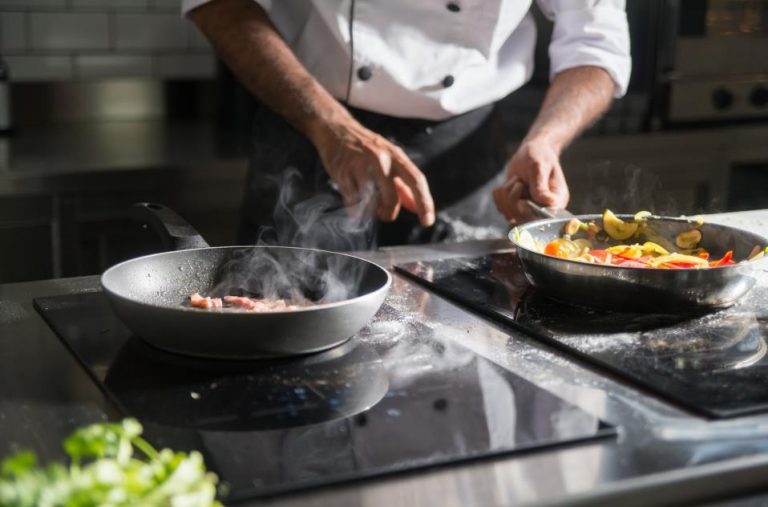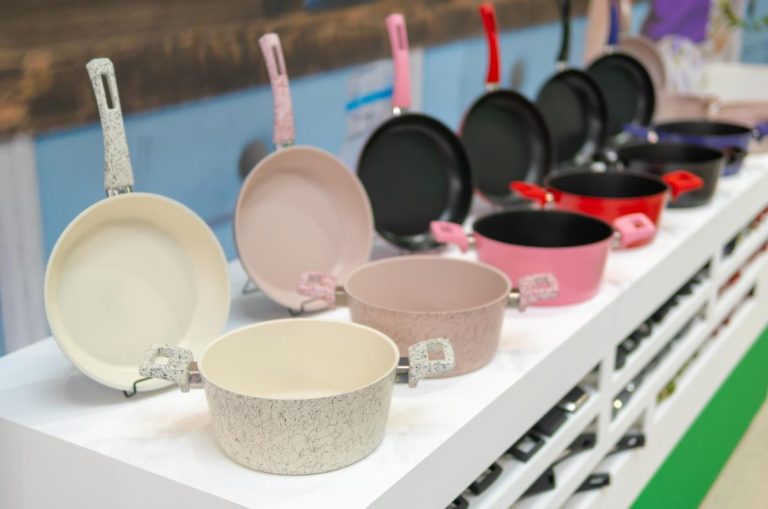Cast iron skillets are beloved for their heat retention, versatility, and ability to develop a natural non-stick surface over time—but none of that is possible without proper seasoning. Whether you just bought a new unseasoned skillet or need to refresh an old one, mastering the seasoning process is key to keeping your cookware in top shape. In this guide, we’ll break down everything you need to know about how to season a cast iron pan.
Whether you’re a home cook using cast iron for the first time, a beginner chef building your toolkit, or a small business owner prepping skillets for customers—these simple steps will turn your new pan into a reliable, non-stick workhorse. Let’s dive in!
Quick Answer:
How to Season Cast Iron in 5 Steps:
1. Wash with soap and dry completely
2. Apply thin layer of high-smoke-point oil
3. Bake upside down at 450°F for 1 hour
4. Cool in oven, repeat 2-3 times
5. Maintain with light oiling after each use
What Is Seasoning for Cast Iron Skillets?
First, let’s clear up a common misconception: seasoning a cast iron skillet has nothing to do with adding salt, pepper, or spices. Instead, cast iron seasoning is the process of creating a thin, protective polymer coating on the skillet’s surface by heating oil to a high temperature. This coating seals the porous iron, preventing rust, creating a natural non-stick layer, and enhancing the skillet’s flavor over time with each use.
When oil is heated beyond its smoke point, it undergoes a chemical reaction called polymerization—turning from a liquid into a solid, plastic-like film that bonds to the iron. The more you season (and use) your skillet, the thicker and more durable this coating becomes, making your cookware more reliable and long-lasting.
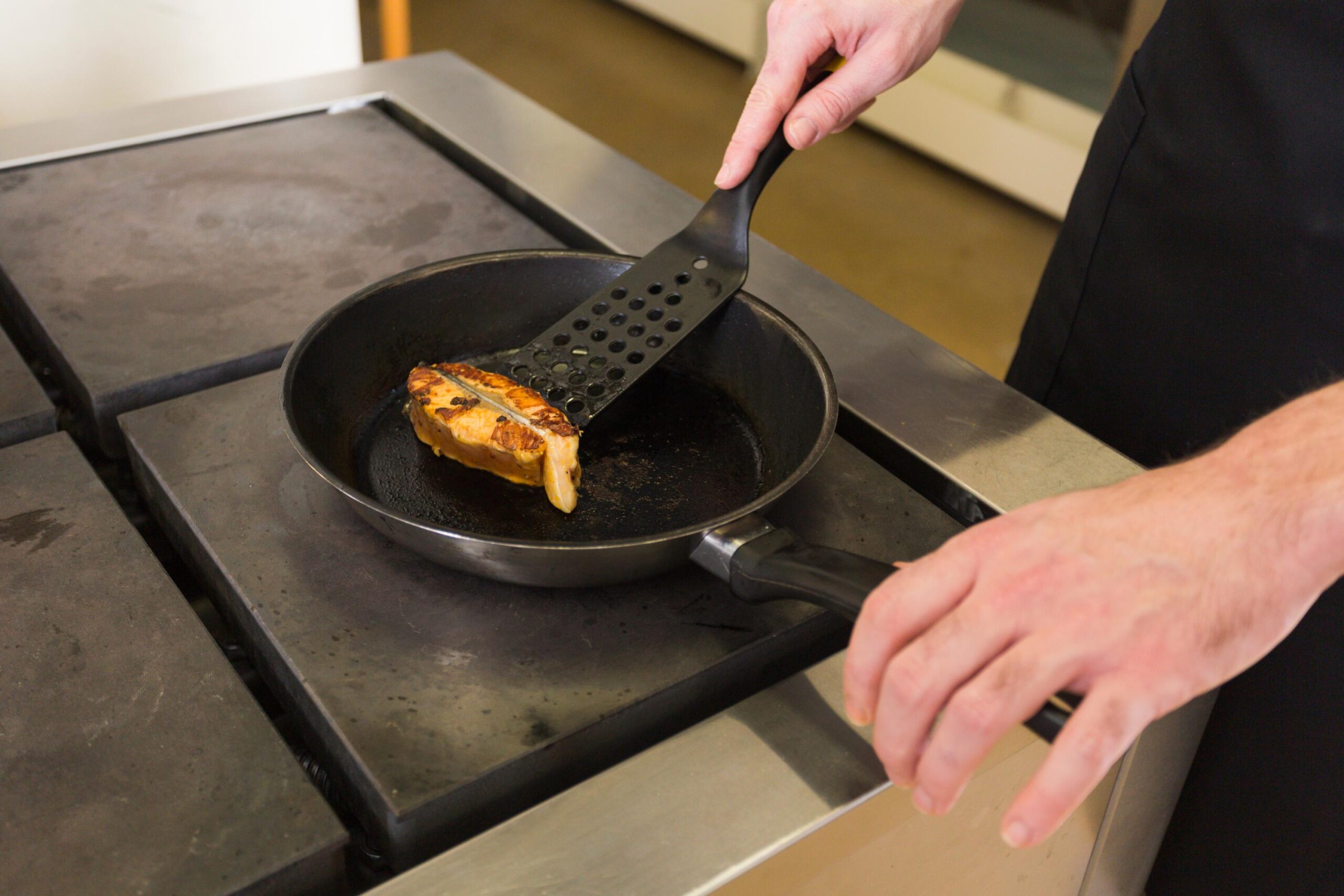
Tools You’ll Need to Season a Cast Iron Skillet
Seasoning doesn’t require fancy equipment—most tools you already have in your kitchen. Here’s what you’ll need:
- Unseasoned or worn cast iron skillet
- High-smoke-point oil
- Clean, lint-free cloths or paper towels
- Oven
- Baking sheet or aluminum foil: To catch any oil drips and protect your oven.
Wholesale & Custom Cast Iron Cookware, Straight From The Factory
Build your brand with a trusted OEM/ODM partner since 1993. Get your free quote today.
Step-by-Step Guide: How to Season Cast Iron Skillets
Follow these simple steps to season your skillet perfectly, whether it’s new or in need of a refresh:
Step 1: Prep the Skillet
Rinse it with warm water and a tiny amount of mild dish soap to remove any factory residue (cast iron is often coated in wax or oil for shipping). Dry it immediately with a towel—never let cast iron air-dry, as this causes rust.
Step 2: Preheat the Oven
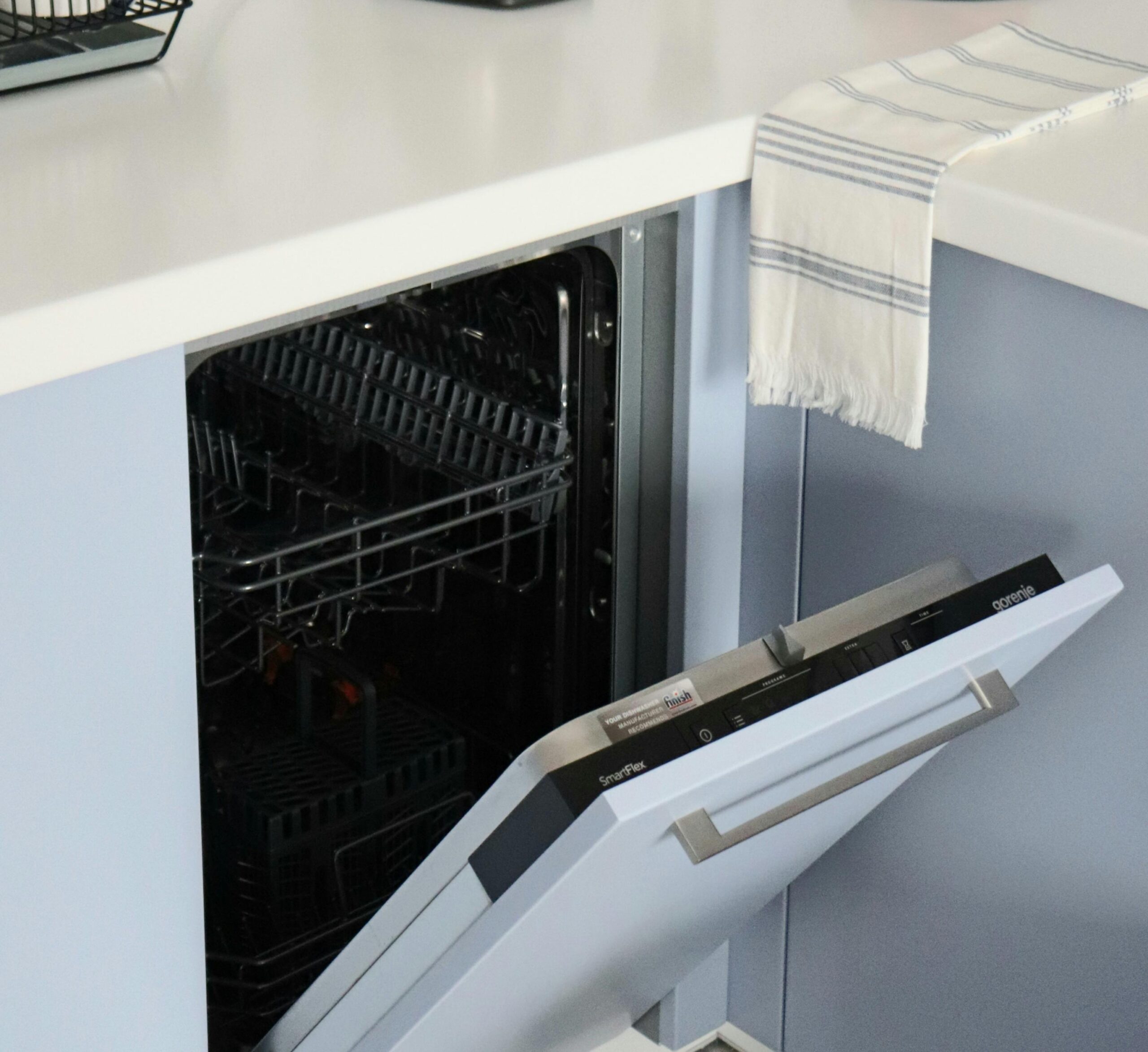
Preheat your oven to 450–500°F (230–260°C). This high temperature is essential for polymerizing the oil—too low, and the coating won’t set properly.
Step 3: Apply a Thin Layer of Oil
Pour 1–2 teaspoons of your chosen oil onto the skillet’s surface (inside and outside, including the handle). Use a paper towel to spread the oil evenly, wiping away excess oil. The layer must be ultra-thin—if there’s too much oil, it will pool and turn sticky instead of forming a smooth coating.
Step 4: Bake the Skillet
Place the skillet upside down on the middle oven rack (this prevents oil from pooling in the bottom). Put a lined baking sheet on the rack below to catch drips. Bake for 1 hour.
Step 5: Cool and Repeat
Turn off the oven and let the skillet cool completely inside (this helps the coating set). For a durable finish, repeat the oiling and baking process 2–3 more times. The more layers you add, the better your non-stick surface will be!
Wholesale & Custom Cast Iron Cookware, Straight From The Factory
Build your brand with a trusted OEM/ODM partner since 1993. Get your free quote today.
How to Choose the Right Oil for Seasoning
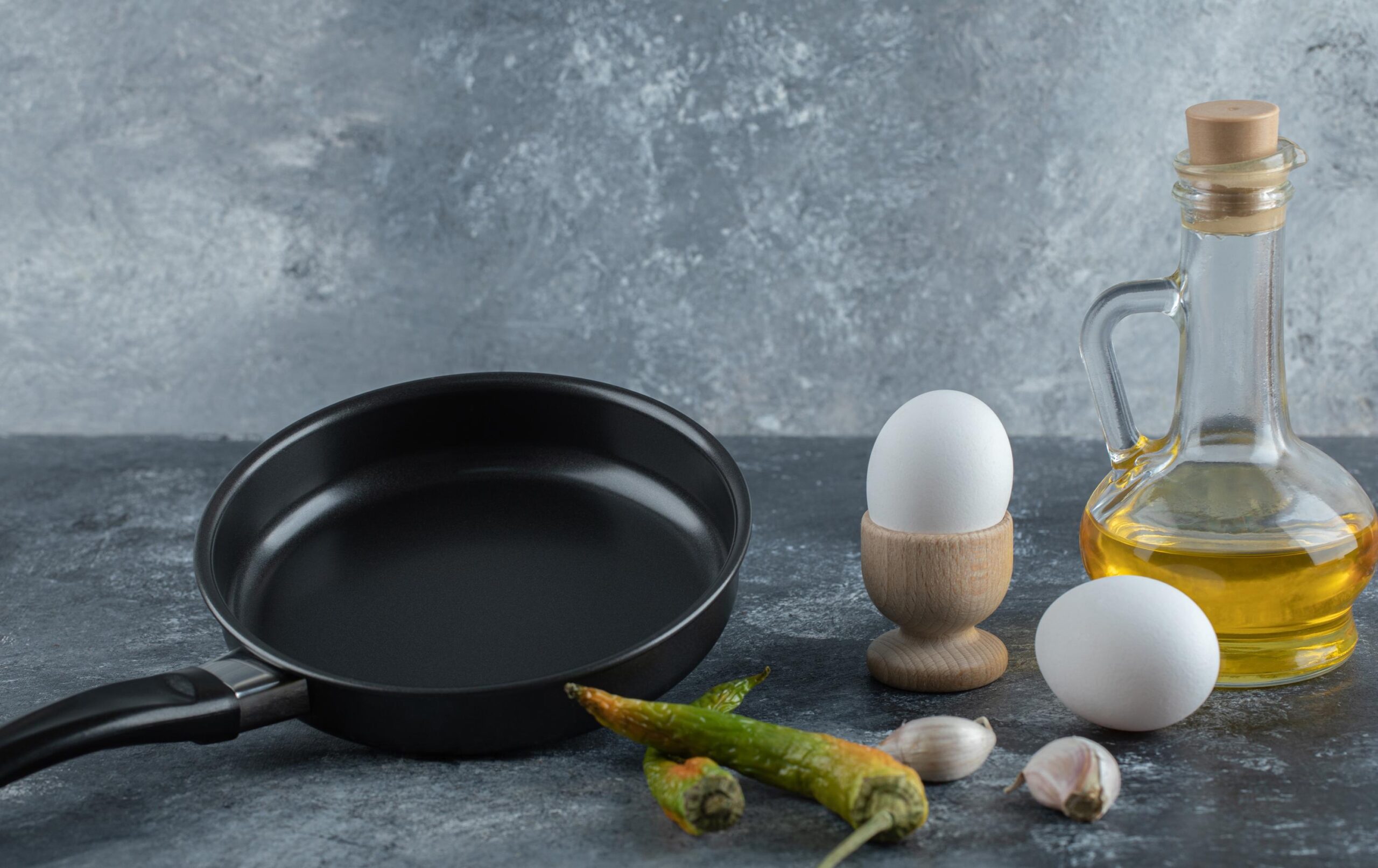
The best oil for seasoning has two key traits: a high smoke point (so it can polymerize without burning) and a high percentage of unsaturated fats (which bond well to cast iron). Here are our top picks:
| Oil Type | Smoke Point (°F) | Pros | Cons |
| Flaxseed Oil | 225 | Creates the hardest, most durable coating | Low smoke point—requires careful heating; expensive |
| Canola Oil | 400 | Affordable, high unsaturated fat content | Neutral flavor; easy to find |
| Avocado Oil | 520 | Highest smoke point—great for high-heat baking | More expensive than canola |
| Soybean Oil | 450 | Budget-friendly, good polymerization | May have a slight flavor |
Oils to Avoid: Olive oil (low smoke point, burns easily), butter (contains milk solids that burn), and coconut oil (high saturated fat, doesn’t bond well).
How to Maintain a Seasoned Cast Iron Skillet
Proper maintenance keeps your seasoning intact and your skillet rust-free. Follow these rules after each use:
- Clean Immediately (But Gently): Wipe the skillet with a paper towel to remove food bits. For stuck-on food, use warm water and a soft sponge—no harsh soaps (they strip the seasoning). If needed, simmer water in the skillet for 5 minutes to loosen debris.
- Dry Thoroughly: Pat the skillet with a towel, then place it on the stovetop over low heat for 1–2 minutes to evaporate any remaining moisture.
- Re-Season Lightly: After drying, rub a tiny amount of oil (1/4 teaspoon) onto the surface with a paper towel. This “touch-up” keeps the seasoning fresh.
- Store Properly: Keep the skillet in a dry place. If stacking, place a paper towel between skillets to prevent scratches. Avoid storing it in damp areas (like under the sink).
Wholesale & Custom Cast Iron Cookware, Straight From The Factory
Build your brand with a trusted OEM/ODM partner since 1993. Get your free quote today.
Frequently Asked Questions
My seasoned skillet is still sticky—what did I do wrong?
Too much oil during seasoning! Wipe away excess oil before baking. If it’s already sticky, scrub gently with warm water, dry, and re-season with a thinner oil layer.
How often do I need to re-season my skillet?
It depends on use. If you notice food sticking more than usual, or the surface looks dull, re-season it. For heavy use, a full re-season every 3–6 months is ideal.
My skillet has rust—can I restore it?
Yes! Scrub the rust with a stiff brush and warm water (or baking soda paste). Dry thoroughly, then re-season using the step-by-step guide above.
Can I use my seasoned cast-iron skillet on an induction cooktop?
Most cast iron skillets are induction-compatible—check for an “induction-safe” label. If not, the iron’s magnetic properties usually work with induction.
Final Thoughts: Invest in Quality Cast Iron (and Trust the Experts)
Seasoning a cast iron skillet is simple, but it starts with a high-quality pan. A well-made cast iron skillet will hold seasoning better, heat evenly, and last for generations—even decades. At leeknives, we specialize in premium cast iron cookware designed for both home cooks and businesses. Whether you’re a retailer looking for reliable wholesale cast iron skillets or a brand needing custom OEM solutions (like branded skillets or specialized sizes), we’ve got you covered. Our skillets are crafted from heavy-gauge iron to ensure durability, making them the perfect base for your seasoning efforts.
With the right seasoning, maintenance, and a quality skillet from leeknives, you’ll enjoy delicious, evenly cooked meals for years to come. Ready to elevate your cast iron game? Contact us today to learn more about our OEM and wholesale services!
